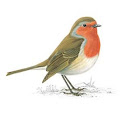Small islands have a magical way of distancing you from your troubles, as if the blue stretch of water you must traverse to arrive there reduces them to blips on the horizon, as insignificant as the twinkling lights on the mainland. After barely twenty-eight hours in Capri last weekend, I felt rejuvenated and calm, like we had been on an entirely new planet.
I remember the first times I experienced this effect, astonished and fascinated by the way everything seemed cleaner and quieter on an island, more straightforward somehow. In consecutive summers, our family traveled to Isle au Haut, off the coast of Maine, and San Juan Island, off the coast of Washington. The two islands are on entirely opposite ends of the country, but they both had that same quality, the quiet of island living. I wouldn't even consider myself a boat/beach/ocean person, but I love the cocoon-like feeling of knowing exactly where you are, always having the sea around the next bend, able to locate yourself precisely on a little patch of rocky earth. Perhaps this is connected to my love of little, miniature things. The world is shrunken, hunkered down. On Capri, every bus is a mini-bus, the roads are lanes, and the shops are tiny arched niches carved into the rocks.
Capri in February feels a bit surreal. Few tourists wander among the closed restaurants and shuttered luxury shops. The breathtakingly perfect little lanes are all but empty. We had the island to ourselves, it seemed. Of course, ferries still disgorged daytrippers, but they were content to remain in the central square, the Piazetta, and environs, long enough to snap a few pictures and get back on another ferry to avoid the bitter wind blowing mercilessly into the island. It was easy to imagine the place in summer, when the Prada and Gucci shops are open for business, when the gift shops aren't empty, when the museums are elbow-to-elbow with flash-happy tourists. Their ghosts are everywhere, the ghosts of the wealthy in leather sandals, tans, and white shorts. The unbelievable blue of ocean and sky and sun helped me imagine them.
But for us Capri's dramatic cliffs and jutting peaks spoke with the roar of a cold wind. When we entered the church of San Michele in Anacapri (the second town on the island), with its magnificent majolica tile floor depicting Adam and Eve's expulsion from Eden, we were the only ones there. The small elderly man who ushered us in was happy to see us, happy to point out the details. When we strolled the piazzas in the evenings, we did so among the locals, eating at the same restaurant twice in the same day, the one where all of the Caprians went, half the dining room filled with a family celebration at lunch and a birthday party for an 18-year-old at dinner. We took a trail around one the edge of the island, leading us past the faraglioni ("lighthouse") rocks that rise from the sea, big as skyscrapers. And we were alone, adrift on the outer limits of an island traversed for centuries, as we explored the ruins of an ancient cave-church, the Matermania.
My favorite visit was the Axel Munthe house, Villa San Michele, a breathtaking home constructed by a well-connected Swedish doctor on the site of one of Tiberius' notorious villas. Again, we were alone as we listened to the terraced gardens and Roman marbles sing to one another under the blue sky and craggy cliffs. An Egyptian sphynx sits at the edge of the garden wall, looking out to sea, an enigmatic symbol of the island. Evidently, the book that Munthe wrote about the construction of his home, The Story of San Michele, is an international bestseller, second only to the Bible (or something like that!), although I had never heard of it until last weekend. We bought a copy (yet another of our book souvenirs), and I started reading it as the minibus wound its way impossibly close to the cliff's edge, with views of Capri town and its sheltering mountains.
(These sorts of museums are always my favorites, the kind that retain the personality and particularity of their prior owners. They're small enough to explore in an hour or two, the art collections are eclectic and interesting, and they usually involve fascinating architecture and charming gardens. The Peggy Guggenheim in Venice and the Musée Rodin in Paris are at the top of my list, as is now the Axel Munthe museum. Here in Brussels, we have the Erasmus house and the Van Buren museum, a lovely art deco home where I discovered the artwork of Gustave Van de Woestyne and wandered the exquisite gardens (complete with maze!). In Boston, we have the Isabella Stewart Gardner museum, where I fall for that ivied atrium every time. I'm sure I'm forgetting some museums that should be on this list. And if you know about more, let me know! I'll go there.)
All too soon we had to catch the ferry back to Naples, but our stay had seemed so much more than those few short hours. From the ferry we watched the hot-orange sun set over the city, its molten-gold rays casting everyone and everything on the old boat into gilt still-lifes. As soon as the disc touched the horizon, it moved so quickly, sliding down as if swallowed, and reminding us of how quickly we spin around on this earth. It was then that, after a slow, sun-drenched weekend on Capri, time sped up once again.
(Note to readers: apologies if you saw a scrambled, truncated, list-like version of this post from earlier this week. I made some random notes to myself that inadvertently were published as an entry. Note to self: Don't use blog for note-taking.)
15 February 2008
Capri
Subscribe to:
Post Comments (Atom)

No comments:
Post a Comment